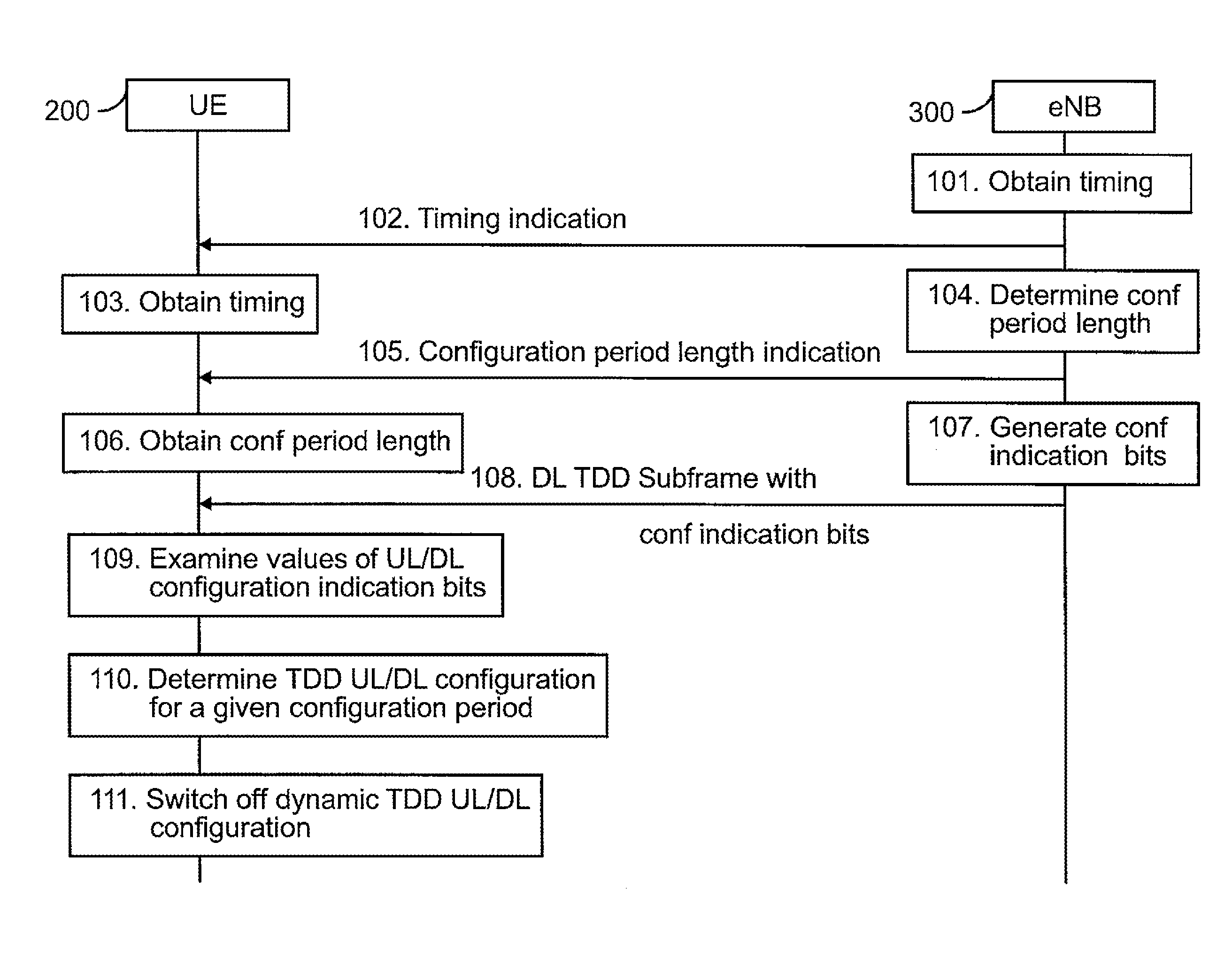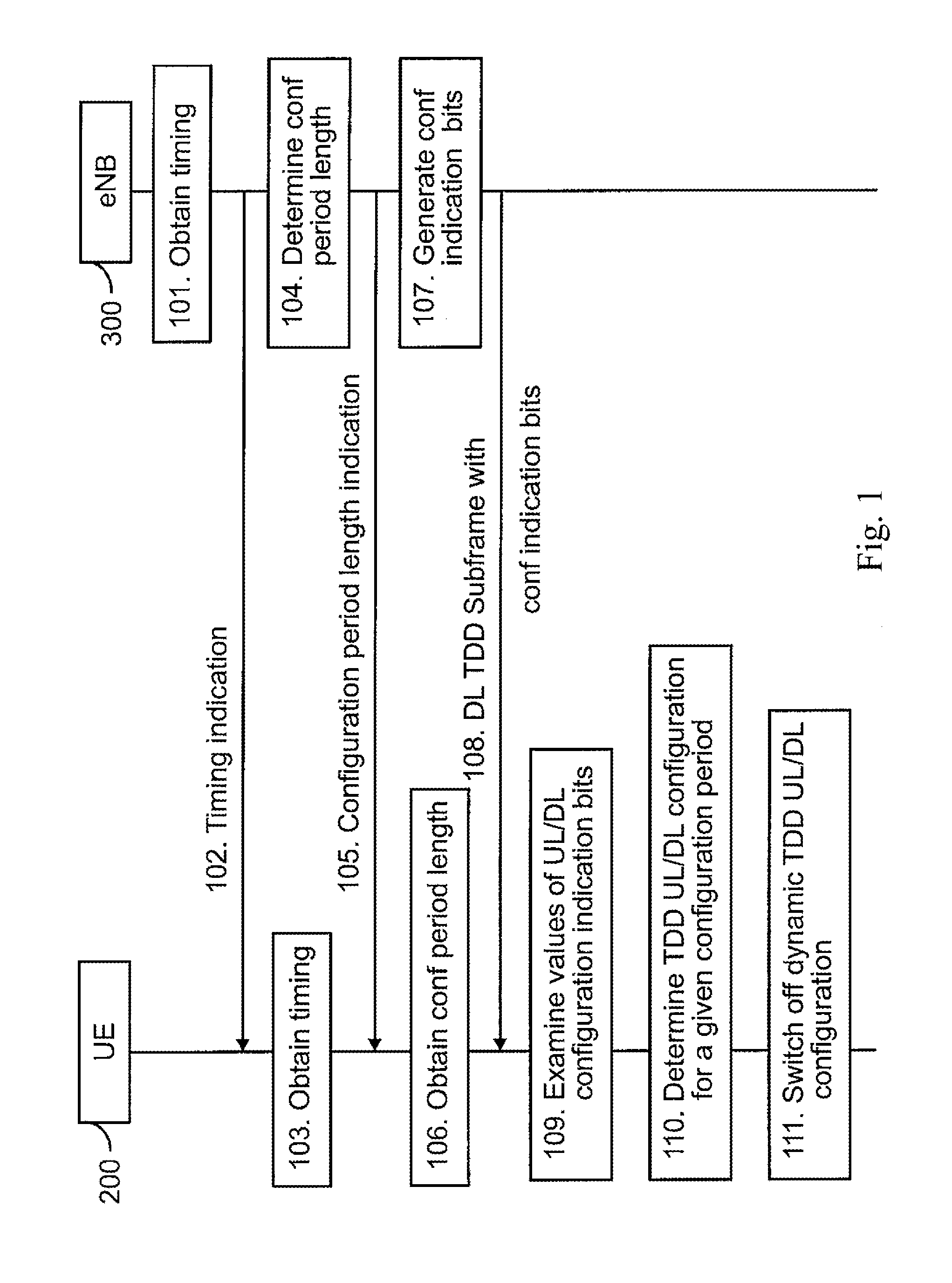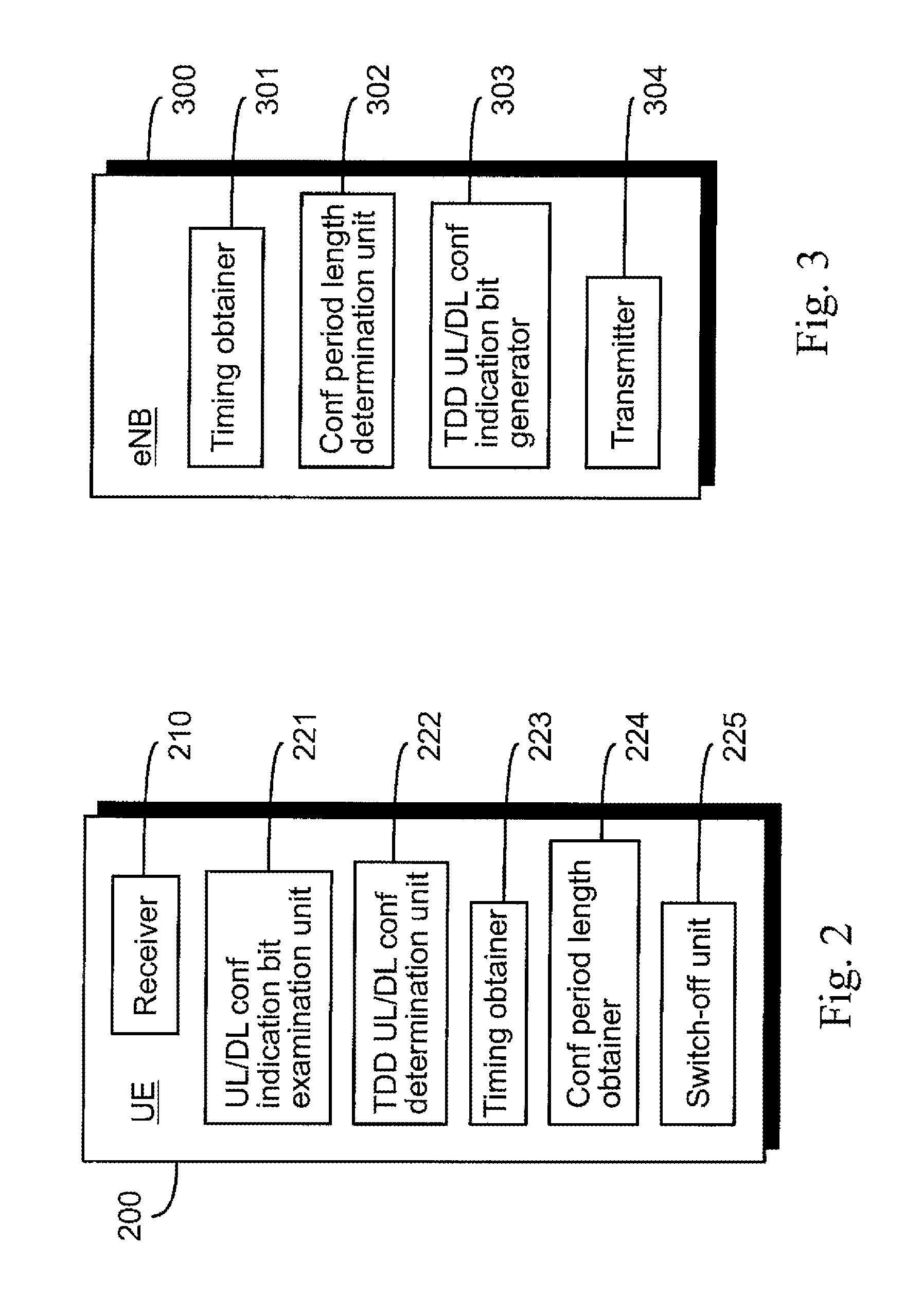Dynamic uplink/downlink configuration for time division duplex
a dynamic uplink/downlink and time division technology, applied in the field of mobile communications, can solve the problems of inefficient resource utilization, detection error, and ue will never know the link direction of non-fixed subframes, and achieve the effects of reducing the power consumption of ue, low implementation complexity, and no increase in blind detection
- Summary
- Abstract
- Description
- Claims
- Application Information
AI Technical Summary
Benefits of technology
Problems solved by technology
Method used
Image
Examples
Embodiment Construction
[0042]Reference will now be made in detail to the embodiments of the present invention, examples of which are illustrated in the accompanying drawings.
[0043]FIG. 1 is a flow diagram illustrating a method of dynamic uplink / downlink configuration for time division duplex according to an embodiment of the invention.
[0044]At step 101, a radio network node 300 obtains timing for at least one time division duplex (TDD) uplink / downlink (UL / DL) configuration indication bit. The radio network node 300 may include e.g. a base station or an evolved Node B (eNB). The radio network node 300 may be deployed e.g. in a mobile communications network utilizing a version of LTE technology, such as LTE Advanced, for example. The radio network node 300 is described in more detail with reference to FIG. 3.
[0045]As discussed in more detail below, the TDD UL / DL configuration indication bit or bits are bits that the present invention uses to indicate which non-fixed subframes of a TDD radio frame (illustrat...
PUM
 Login to View More
Login to View More Abstract
Description
Claims
Application Information
 Login to View More
Login to View More - R&D
- Intellectual Property
- Life Sciences
- Materials
- Tech Scout
- Unparalleled Data Quality
- Higher Quality Content
- 60% Fewer Hallucinations
Browse by: Latest US Patents, China's latest patents, Technical Efficacy Thesaurus, Application Domain, Technology Topic, Popular Technical Reports.
© 2025 PatSnap. All rights reserved.Legal|Privacy policy|Modern Slavery Act Transparency Statement|Sitemap|About US| Contact US: help@patsnap.com



